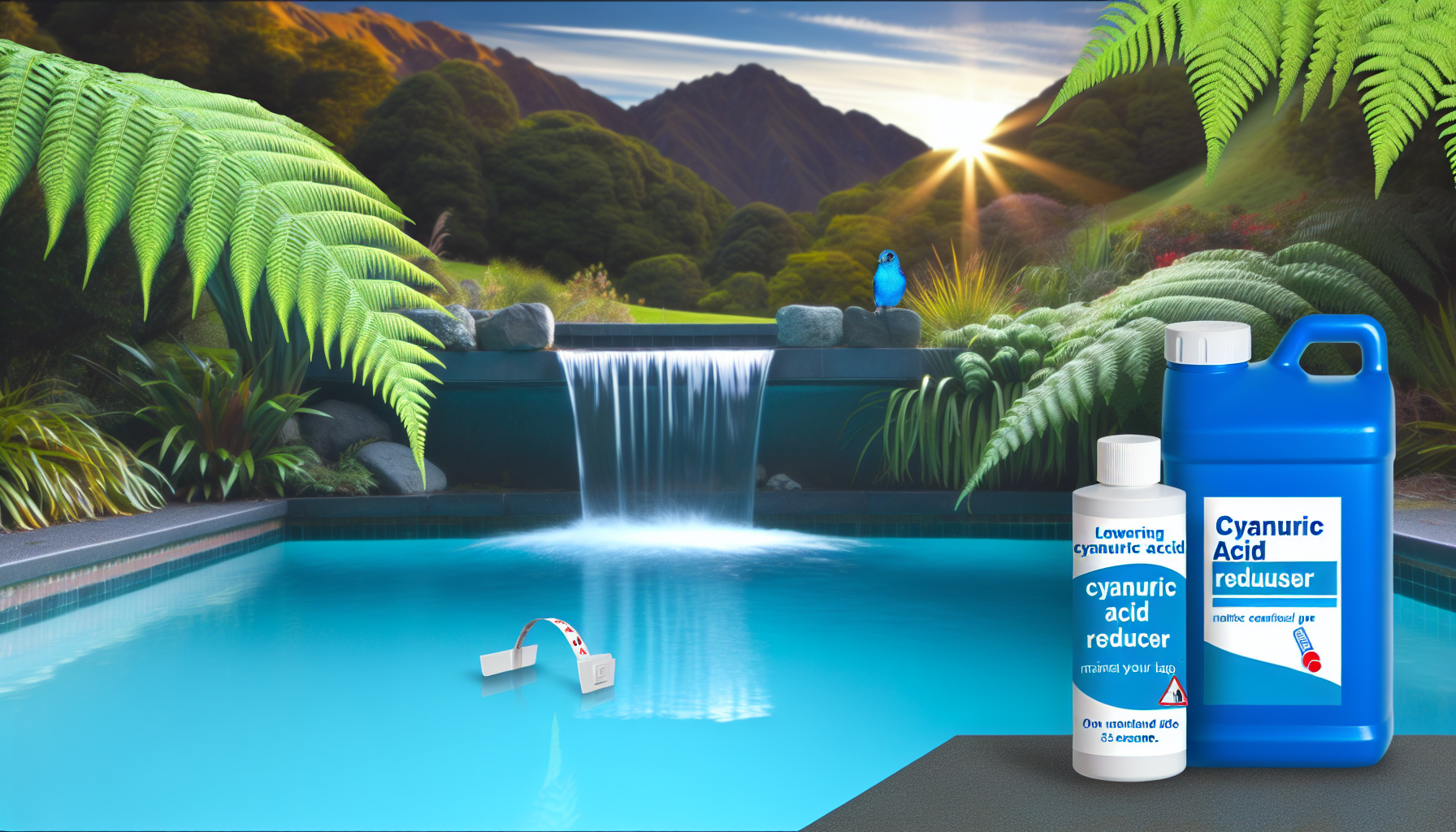Right, so your pool’s cyanuric acid (CYA) levels are too high. It happens. CYA is important because it stops the sun from burning off all your chlorine, but too much of it? That’s a problem. When your CYA levels get too high, the chlorine struggles to do its job, and you end up with water that looks fine but isn’t really keeping bacteria and algae in check.
First, Check the Levels
Before you do anything, get a decent test kit. The ones from places like Pool & Spa Warehouse NZ or Bunnings New Zealand should do the trick. Ideally, your CYA should be between 30-50 ppm for a standard backyard pool. If it’s much higher than that, it’s time to take action.
The Only Real Fix: Dilution
Let’s cut to the chase—there’s no magic chemical that just “removes” cyanuric acid. The only way to bring it down is to drain and refill part of your pool water. The more water you replace, the lower your CYA will go.
Here’s how to do it:
- Turn off your pool pump – You don’t want air getting into your system.
- Partially drain the pool – Aim to remove about 25-50% of the water depending on how high your CYA is. If it’s double the recommended level, start with a 50% drain.
- Refill with fresh water – Use your garden hose or a water truck if you’re on tank water.
- Test again – Once everything’s mixed in, check if you’ve reached a good CYA level. If not, repeat with another partial drain.
If you’re on mains water, this is pretty easy. If you’re on tank water, though, you might need to plan ahead—check with local suppliers like Water Direct for delivery options.
What About CYA Reducer Products?
You might see CYA-lowering products online or at pool stores, but honestly, they’re hit or miss. Some people say they work, others say they don’t. They also take time, sometimes weeks. If you need a quick fix, water replacement is your best bet.
How to Stop This Happening Again
Okay, now that you’ve fixed the problem, let’s make sure it doesn’t happen again:
- Stop using stabilised chlorine all the time – Most chlorine tablets and some pool powders contain CYA. Over time, CYA builds up because it doesn’t evaporate like other pool chemicals do. Switch to liquid chlorine (like what you can grab from Mitre 10 or Poolside Christchurch) for regular dosing.
- Check your levels more often – Testing once a month will help you catch rising CYA before it gets out of hand.
- Use stabilised chlorine only when it makes sense – If you’re in the middle of summer and your pool is smashing through chlorine, stabilised options might help. But don’t rely on them long-term.
The Bottom Line
High cyanuric acid isn’t the end of the world, but if you ignore it, your pool will become a breeding ground for bacteria, no matter how much chlorine you dump in. The best fix? Drain and refill. And next time, keep an eye on those stabilised chlorine products so you’re not back in the same spot in a few months.
Got a different way to manage CYA levels? Let us know! Pools are all about balance, and the more we all know, the better we can keep them clean.


Leave a Reply